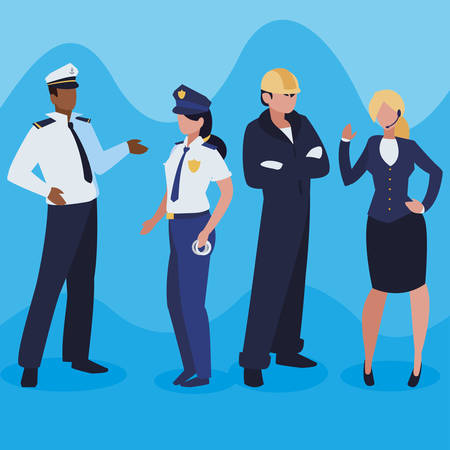1. Understanding the Gender Gap in American Workplaces
What is the Gender Gap?
The gender gap in the American workplace refers to the differences in opportunities, pay, and representation between men and women. Despite progress over the years, these disparities are still present across many industries.
Current State of Gender Disparities
Lets take a closer look at some key areas where gender differences show up:
| Area | Men | Women | Notes |
|---|---|---|---|
| Leadership Representation | Majority of executives & senior managers | Underrepresented, especially at the top | Women hold about 1 in 4 C-suite roles |
| Pay Inequality | $1.00 (baseline) | $0.82 on average for every $1 earned by men | Varies by industry and race/ethnicity |
| Promotion Rates | Promoted more quickly and frequently | Slower promotion rates, especially to higher levels | “Broken rung” often happens at first step up to manager |
Cultural Factors Affecting Women’s Advancement
A number of underlying cultural factors continue to affect womens career growth:
- Stereotypes: Persistent beliefs that leadership is a “male trait” can impact hiring and promotion decisions.
- Lack of Role Models: Fewer women in high-level positions means fewer examples for others to follow.
- Work-Life Balance Expectations: Women are often expected to take on more family responsibilities, which can limit career advancement.
- Mental Load: The invisible emotional labor that women often carry both at work and home can add extra stress.
The Impact on Organizations and Employees
The gender gap doesnt just affect individual women—it also impacts organizations as a whole. Companies with more diverse leadership teams tend to outperform their peers, bring in new perspectives, and foster better work environments for everyone.
2. Barriers to Promotion for Women
Understanding the Roadblocks
Many women in the American workplace face unique challenges when aiming for promotions. These barriers are often subtle but have a real impact on career advancement. By recognizing these obstacles, women and organizations can work together to create more equal opportunities.
Common Obstacles to Advancement
| Obstacle | Description |
|---|---|
| Unconscious Bias | Decisions about promotions are sometimes influenced by hidden beliefs or stereotypes. For example, people might assume women are less committed to their careers because of family responsibilities, even if that’s not true. |
| Stereotype Threat | This happens when women feel pressure to prove themselves because they are aware of negative stereotypes. This stress can affect confidence and performance during evaluations or interviews for promotions. |
| Lack of Access to Informal Networks | In many companies, important information and opportunities are shared through informal groups or social circles—like after-work gatherings or golf outings—where women may be underrepresented or excluded. |
How These Barriers Show Up at Work
- Being Overlooked for Stretch Assignments: Sometimes managers offer big projects to employees who remind them of themselves, which can leave out talented women.
- Limited Mentorship Opportunities: Without mentors or sponsors, it can be tough to get advice or inside tips on how to move up.
- Lack of Visibility: Women may not get the same spotlight for their achievements as their male peers, making it harder for decision-makers to notice their contributions.
Tackling the Challenges Together
It’s important for organizations and individuals alike to recognize these barriers. Only then can everyone take steps toward creating a fairer environment where all employees have an equal shot at advancing their careers.

3. Setting Ambitious and Achievable Career Goals
Using Goal-Setting Frameworks: SMART Goals
For women aiming to close the gender gap in promotions, having a clear roadmap is essential. One of the most effective ways to do this is by using the SMART goals framework. SMART stands for Specific, Measurable, Achievable, Relevant, and Time-bound. By following these guidelines, career goals become more tangible and easier to track.
| SMART Criteria | Questions to Ask Yourself | Example for Promotion |
|---|---|---|
| Specific | What exactly do I want to achieve? | I want to be promoted to Senior Manager in my department. |
| Measurable | How will I know when I’ve achieved it? | I will complete three leadership projects and receive positive feedback from my supervisor. |
| Achievable | Is it realistic given my current skills and resources? | I have completed relevant training and have led successful teams before. |
| Relevant | Does this goal align with my career aspirations? | This promotion fits my long-term plan to move into executive leadership. |
| Time-bound | When do I want to achieve this goal? | I aim to achieve this within the next 18 months. |
Strategies for Self-Advocacy in the Workplace
Self-advocacy is a key component for women striving for career advancement. This means actively communicating your achievements, seeking feedback, and expressing your interest in new opportunities. Don’t wait for others to notice your hard work—make sure your contributions are visible. Regularly update your manager about your progress, ask for stretch assignments, and participate in professional development activities.
Tactics for Effective Self-Advocacy:
- Document Your Successes: Keep a record of your accomplishments and positive feedback.
- Network Internally: Build relationships with mentors, sponsors, and colleagues across departments.
- Prepare for Performance Reviews: Enter reviews with specific examples of your impact and future goals.
- Ask for Feedback: Show initiative by requesting constructive criticism and acting on it.
- Express Career Aspirations: Clearly communicate your desire for advancement during one-on-one meetings with supervisors.
The Importance of Aligning Personal Aspirations with Organizational Opportunities
Pursuing promotion is most effective when your personal career aspirations match what your organization can offer. Take time to understand the company’s values, growth areas, and upcoming projects. Look for ways where your skills can fill organizational needs or contribute to strategic initiatives. This not only boosts your chances of promotion but also ensures greater job satisfaction as you grow in a role that matches both your interests and the companys direction.
Questions to Consider When Aligning Goals:
- What are the company’s main priorities over the next year?
- Which departments or roles are expanding?
- How can my strengths help address key challenges in the organization?
- Are there leaders who can mentor me or advocate on my behalf?
Taking a strategic approach to setting ambitious yet achievable career goals helps women confidently navigate the path toward promotion while bridging the gender gap in American workplaces.
4. Building Support Systems for Success
The Importance of Mentorship, Sponsorship, and Networking
In the American workplace, having a strong support system is key for women aiming to close the gender gap in promotions. Mentorship, sponsorship, and networking play different but important roles in career advancement. Each offers unique benefits and helps women navigate challenges, gain visibility, and access new opportunities.
Mentorship vs. Sponsorship: What’s the Difference?
| Support Type | Description | Main Benefit |
|---|---|---|
| Mentorship | A mentor gives guidance, shares experiences, and offers advice for personal and professional growth. | Skill-building and confidence |
| Sponsorship | A sponsor actively advocates for you, recommends you for projects or promotions, and uses their influence on your behalf. | Visibility and advancement |
| Networking | Connecting with peers and leaders across the organization or industry to exchange information and support. | Opportunities and collaboration |
Practical Tips to Build Your Support Network
- Seek Out Mentors: Look for people whose careers you admire within your company or industry. Reach out with a clear request—ask for a coffee chat or advice on a specific topic.
- Find Sponsors: Identify leaders who have influence in your organization. Show your skills by taking on visible projects so they can see your potential firsthand.
- Join Employee Resource Groups (ERGs): Many American companies have ERGs focused on women’s leadership. These groups offer networking events, workshops, and support from colleagues who understand your challenges.
- Attend Industry Events: Conferences, webinars, or local meetups are great places to connect with professionals outside your organization. Don’t hesitate to introduce yourself—networking is expected in American business culture.
- Nurture Relationships: Keep in touch with mentors, sponsors, and peers by sharing updates, celebrating their successes, or offering help when you can.
Sample Email to Request Mentorship
Hello [Name],
I’ve been following your work on [specific project/topic], and I really admire your approach. I’m currently working on developing my skills in [area], and I would appreciate any advice you could share. Would you be open to a short meeting over coffee or a virtual call? Thank you for considering!
5. Leveraging Organizational Resources and Policies
Understanding Available Resources
Many American companies have developed workplace programs, Employee Resource Groups (ERGs), and diversity & inclusion initiatives to support employees’ professional growth. For women aiming to close the gender gap in promotions, knowing how to make the most of these resources is essential. These tools can provide mentorship, networking opportunities, leadership training, and a supportive community.
Workplace Programs that Empower Women
Some organizations offer specific programs designed for women’s advancement. These might include leadership academies, skill-building workshops, or sponsorship programs. To take full advantage of these, women can proactively sign up, seek out information from HR, or ask their managers about upcoming opportunities.
Common Workplace Programs and Benefits
| Program Type | Main Benefits | How to Get Involved |
|---|---|---|
| Leadership Training Workshops | Builds confidence and skills needed for promotion | Sign up through HR or internal platforms |
| Mentorship Programs | Guidance from experienced professionals | Request a mentor or volunteer as a mentee |
| Sponsorship Initiatives | Support from senior leaders in career growth | Express interest to managers or ERG leads |
| Skill-Building Courses | Enhances technical and soft skills relevant for new roles | Enroll in offered courses; track progress with HR tools |
The Power of Employee Resource Groups (ERGs)
Employee Resource Groups are voluntary, employee-led groups that focus on shared characteristics or life experiences. Women’s ERGs often host events, workshops, and panels featuring female leaders both inside and outside the company. Joining an ERG can help women build networks, find mentors, and stay motivated as they pursue career goals.
How to Use ERGs Effectively:
- Attend events: Participate in discussions and connect with others facing similar challenges.
- Volunteer for leadership roles: Gain valuable experience by organizing events or leading committees within the group.
- Share your goals: Let group members know about your ambitions—someone may offer guidance or open doors for you.
Diversity & Inclusion Initiatives: More Than Just Policies
Diversity & inclusion (D&I) efforts are now a big part of many corporate cultures in the U.S. These initiatives go beyond just having policies—they often create actionable programs aimed at promoting equity. Women can benefit by staying informed about these initiatives, joining focus groups, and offering feedback about their experiences.
Tips for Engaging with D&I Initiatives:
- Stay informed: Read company newsletters or intranet updates on D&I efforts.
- Provide input: Share your perspective in D&I meetings or surveys to help shape future programs.
- Pursue D&I-related opportunities: Apply for task forces or special projects linked to gender equity or inclusion.
Tying It All Together: Strategic Goal-Setting Using Company Resources
If you want to advance your career while helping to close the gender gap, set clear goals aligned with available organizational resources. For example, you could set a goal to complete a leadership program this year or take on a project lead role within your ERG. Track your progress using personal development plans and don’t hesitate to reach out for support from HR or group leaders if needed. By leveraging what your company offers, you can move closer to promotion—and help pave the way for other women too.

